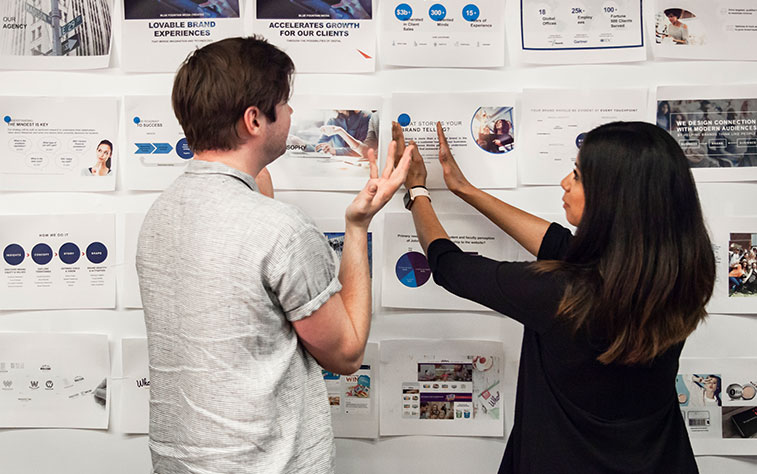The world is quickly becoming a place where brands differentiate themselves not on product, or price, but on the quality of the experience they provide.
Obviously, you can keep (or lose) customers with a good (or bad) experience. But the impact of experience goes far beyond retention.
Your audience is weighing up customer experience when they choose whether to become your customers, how often or how much to buy from you, and whether to provide the reviews and advocacy that convert your next set of loyal fans.
Whether in-store, on the phone, or online, customer expectations are high. But on digital channels where you can’t offer personal service, how do you ensure the platform you build isn’t just functional, but experiential?
At Majorsystems, planning for human-centric experiences is at the core of every digital strategy we create, and guides each individual deliverable that comes from our team. We’re emboldened by the challenge of turning designs and code into interactions and emotions – it’s by delivering these experiences that we help our clients grow and stay relevant year after year.
Experiences Matter
When people interact with your brand digitally, impressions form quickly and stick for a long time. And people don’t keep their opinions to themselves – their point of view gets shared with friends, families, and total strangers. So when you’re creating digital experiences for people, the stakes are high.
BFM was born in the digital era, so we’re no strangers to shifting UX and design trends – we’ve seen more than a few fads come and go. We evolve and innovate, drawing on the expertise of cross-disciplinary teams, but we have one touchstone: giving the best possible experience to the people using your site.
Creating human-centric experiences for your audience is about giving users exactly what they need, eliminating friction, and injecting a bit of brand personality into the process. To do all that effectively, requires a strategy.
Strategizing for Success
At Majorsystems, we look at your brand’s entire ecosystem in order to create a digital strategy. This means getting a deep understanding of your business goals, how your site or app will serve your business, and what it will need to do for you. We want to understand how the experience we’re creating will fit into your existing workflows, collaborating with you to digitize those workflows where necessary.
It’s also important for us to really get to know your competitors. We want to understand who’s out there, how they set customer expectations, and where there may be opportunities to differentiate your brand or outperform the competition.
Most important of all, we go deep into the data to discover the behavior, motivations, and needs of your audience. This involves qualitative and quantitative research, surveys, and interviews – any information we can lay our hands on.
Building an experience is not just about following best practices. A strong digital strategy ensures that the most important audiences, functionality, design direction, and business goals are surfaced at the very beginning of the process, laying the foundations for everything else.

Thinking of the User
You know what they say about failing to plan. And planning is absolutely essential to everything we do in experience design – ensuring our strategy is implemented, and that design and development are set up for success.
Once we get a sense for what makes your audience tick, our information architecture and user experience department uses that information to build out personas – representative examples of your different customer groups, with context and background about them.
Personas are essential to our planning process, because they ensure each and every feature we recommend helps your audience accomplish a task they need to do. And when we define the tasks each persona will need to complete on site, we ensure each task is broken into subtasks so that scope is clearly defined during planning.
But the real test isn’t what we think of our planning – or even what you think of our planning. It’s what your users think.
That’s why we are passionate about putting our prototypes in front of users and getting honest feedback about them. Do they work? Are they confusing? Can users perform the required tasks quickly and easily? User testing is the simplest and best way to cut through opinions and get to real answers – ensuring your stunning web or app designs are built on a solid foundation of outstanding user experience.



